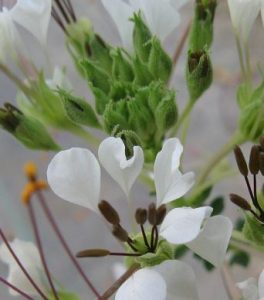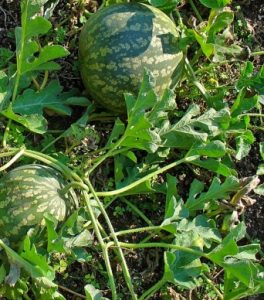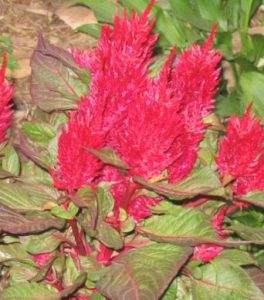 Common Name: Taro
Common Name: Taro
Description
Colocasia esculenta is a tropical plant grown primarily for its edible corms, the root vegetables most commonly known as taro. It is believed to be one of the earliest cultivated plants. Linnaeus originally described two species which are now known as Colocasia esculenta and Colocasia antiquorum of the cultivated plants that are known by many names including eddoes, dasheen, taro, but many later botanists consider them all to be members of a single, very variable species, the correct name for which is Colocasia esculenta . . . .Read more
References
Switchboard
Wikipedia
Month: March 2013
Cleome gynandra
 Common Name: Spiderplant
Common Name: Spiderplant
Description
Cleome gynandra is a species of Cleome that is used as a green vegetable. It is known by many common names including Shona cabbage[, African cabbage, spiderwisp, cat’s whiskers,and stinkweed. It is an annual wildflower native to Africa but has become widespread in many tropical and sub-tropical parts of the world. It is an erect, branching plant generally between 25 cm and 60 cm tall. Its sparse leaves are each made up of 3-5 oval-shaped leaflets. The flowers are white, sometimes changing to rose pink as they age. The seed is a brown 1.5mm diameter sphere. The leaves are edible. . . . .Read more
References
Switchboard
Wikipedia
Citrullus lanatus
 Common Name: Watermelon
Common Name: Watermelon
Description
Citrullus lanatus is a plant species in the family Cucurbitaceae, a vine-like (scrambler and trailer) flowering plant originally from West Africa. It is cultivated for its fruit. The subdivision of this species into two cultivars, watermelons (Citrullus lanatus (Thunb.) var. lanatus) and citron melons (Citrullus lanatus var. citroides (L. H. Bailey) Mansf.), originated with the erroneous synonymization of Citrullus lanatus (Thunb.) Matsum. & Nakai and Citrullus vulgaris Schrad. by L.H.Bailey in 1930. Molecular data including sequences from the original collection of Thunberg and other relevant type material, show that the sweet dessert watermelon (Citrullus vulgaris Schrad.) and the bitter wooly melon . . . .Read more
References
Switchboard
Wikipedia
Celosia argentea
 Common Name: Celosia
Common Name: Celosia
Description
Celosia argentea, commonly known as plumed cockscomb, or the silver cock’s comb,is a herbaceous plant of tropical origin, and is known for its very bright colors. In India and China it is known as a troublesome weed.. . . .Read more
References
Switchboard
Wikipedia